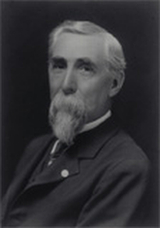Source: Master of Precision: Henry M. Leland, 1966, p. 59
Henry Leland: Citations en anglais
Source: Master of Precision: Henry M. Leland, 1966, p. 62; About the first motors Leland build for Ransom E. Olds in 1901
Source: Master of Precision: Henry M. Leland, 1966, p. 20; Lelands father was farmer and drove an eight-horse wagon between Boston and Montreal. Leland gave a description of the working conditions of those drivers.
Source: Master of Precision: Henry M. Leland, 1966, p. 146-7: About the development of a six-cylinder motor in 1913-14
Source: Master of Precision: Henry M. Leland, 1966, p. 65. About the Leland family buying their first automobile around 1901
“Mr. Sloan, Cadillacs are made to run, not just to sell.”
Henry M. Leland, cited in David Farber. Sloan Rules: Alfred P. Sloan and the Triumph of General Motors,p. 14
Leland, as car builder, explained Alfred P. Sloan, the supplier of Hyatt bearings, that his bearings not (yet) met the requirements.
Source: Master of Precision: Henry M. Leland, 1966, p. 147; Leland talking about his idea for a V8 engine around 1913-14. Partly cited in: Alexander Richard Crabb (1969), Birth of a giant: the men and incidents that gave America the motorcar. p. 315
